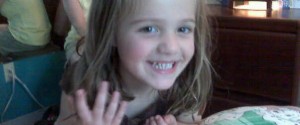 Integrative Craniosacral helps your child in so many ways. Children with sensory integration issues are less volatile. Ear aches heal faster. Their ability to attend improves. Good behavior and regulation are a consistent result of Integrative Craniosacral and it happens without medication.
Integrative Craniosacral helps your child in so many ways. Children with sensory integration issues are less volatile. Ear aches heal faster. Their ability to attend improves. Good behavior and regulation are a consistent result of Integrative Craniosacral and it happens without medication.
We really understand how craniosacral techniques improve sensory integration. Back when SI was new and everyone was learning about it, Tony Preston had the opportunity to work in a practice with the OT that was bringing those seminars to Atlanta. While attending those seminars, he was teaching for the National Institute of Craniosacral Studies and writing The Workbook of Neuromuscular Therapy. In this unique place he was able to create a better craniosacral treatment approach for special needs children.
Low muscle tone? Tight Muscles? Integrative Craniosacral! So many parents are confused when they are told that their child has low muscle tone by one practitioner and hypertonicity by another. That’s what trigger points do to bodies. They also generate pain and irritation. Want to know more about this? Read this overview for therapists on trigger points from Preston’s Papers.
Integrative Craniosacral helps with attention problems and regulatory disorders. Research from Janet Travell, MD, physician to the presidents, describes how trigger points create the same problems that your OT describes like sensitive to tags and fight-or-flight syndrome. Integrative Craniosacral not only relieves trigger points throughout the body, it improves neurovascular pathways for sensory organs like eyes and ears.
Does your OT tell you that your child has vestibular concerns and needs lots of proprioceptive input?The vestibular system is embedded in the cranial bones. Proprioceptors are one of the primary targets of Integrative Bodywork. Children like this have significant improvements in regulation with Integrative Craniosacral.
Other therapies are more effective and progress more quickly when craniosacral therapy is a part of the plan. For instance, research at the National Institute of Craniosacral Studies has shown that the duration of vision therapy is consistently and significantly reduced when it is combined with cranial treatment. Speech therapy consistently takes a leap when oral-motor is addressed with cranial techniques. Read more about how structural therapies improve your other therapies here.
Trust your child to the hands of experience. Thousands of therapists have taken craniosacral courses. Only a few do it full-time. Even fewer have taught the work. Tony Preston has treated special needs children with craniosacral techniques as a daily part of his practice for more than 15 years. These refined techniques have proven to be effective in the treatment of children on the autism spectrum, cerebral palsy, and more…
